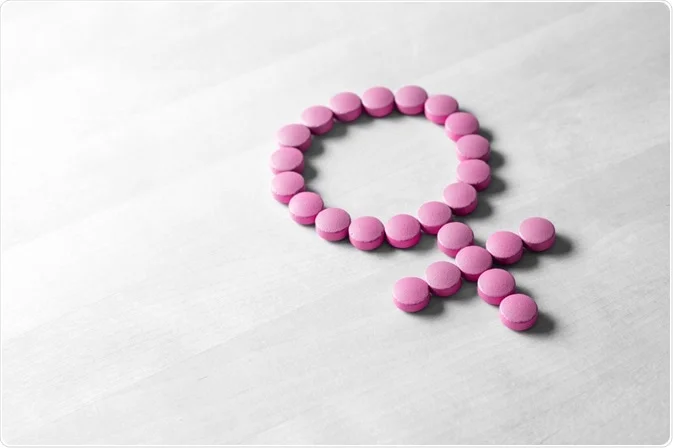Did you know that the human body produces more than 50 hormones? Estrogens (female sex hormones) and androgens (male sex hormones) are the most well-known.
Estradiol, in turn, is a specific form of estrogen, also known as E2. It’s one of the four types of estrogen produced mainly by the ovaries. However, its production also occurs in the male testes and adrenal glands.
Either way, adequate estradiol levels are necessary for reproductive system development and health. Thus, having too much or too little of this hormone can lead to sexual health problems.
To that end, we created this guide on estradiol and how its levels influence the body and overall health. So keep reading, as it can help you determine what to do next if you have problems with this hormone.
What Exactly Does Estradiol Do?
Estradiol’s primary function in female sexual health is maintaining the reproductive system. For example, its levels go up during the menstrual cycle to allow for the maturation and release of an egg. In addition, it thickens the uterus lining, helping implant a fertilized egg.
In men, estradiol’s chief roles include maintaining bone health and brain function. However, it also plays a role in male sexual health by producing nitric oxide (NO). NO helps with vasodilation, which, in turn, is necessary for erections.
How Are Estradiol Levels Measured?
Health care providers measure estradiol levels through an estradiol test. It’s a simple procedure that involves taking a blood sample from your arm or hand. A needle draws blood from a suitable site, which your doctor sends to a lab for testing.
What Are Normal Estradiol Levels?
Estradiol levels vary between males and females. Likewise, they differ between pre-menopausal and post-menopausal women. That’s because there’s a significant decrease in the hormone’s production during menopause.
In males, normal estradiol levels range from 10 to 50 pg/mL. In pre-menopausal women, healthy levels are between 30 and 400 pg/mL. That then drops to 0 to 30 pg/mL in post-menopausal females.
What Can High Estradiol Levels Do?
High estradiol levels may increase the risk of acne development in women. Research suggests this may be due to how estradiol converts into androgen. Androgens, in turn, stimulate sebum production and support the colonization of acne-causing bacteria.
Extremely high estradiol levels in women may also put them at a higher risk of uterine and breast cancer. In addition, having too much of this hormone can result in weight gain and menstrual issues.
On the other hand, men who have too much estradiol may experience low sexual desire. Moreover, men with high levels of the E2 hormone may develop erectile dysfunction (ED).
What About Low Estradiol Levels?
Low estradiol levels can hamper bone growth, development, and overall health. Therefore, older men and women with too little estradiol may be at a higher risk of osteoporosis.
Having low estradiol levels is typical during and after menopause. However, it may indicate a failing ovary or pregnancy in younger women.
Too little estradiol may also signal an impaired thyroid function in both men and women.
How Are Abnormal Estradiol Levels Treated?
Treatment for abnormal estradiol levels depends on whether they’re too high or low. Moreover, medical treatment isn’t always necessary, as lifestyle changes may be enough. However, medications and hormonal therapy are available for more severe cases.
Decreasing Body Fat
If you have high estradiol levels, decreasing your body fat may help normalize them. One reason is that fat cells secrete estrogens, including estradiol. Therefore, the fewer fat cells in the body, the less E2 can get released into your system.
Likewise, high body fat can lead to lower estradiol levels. Thus, reducing body fat may also help if the problem is that you have low E2 levels in your system.
Drinking in Moderation
If you have high estradiol levels, avoid alcohol, or at the very least, reduce your intake. According to researchers, alcohol raises estradiol levels in both men and women. Moreover, they found that it decreases fecundability (probability of conception during menstrual cycles).
Supplementation
Talk to your doctor about taking supplements to regulate your estradiol levels. Depending on what’s causing your E2 woes, it may help if you take B vitamins, probiotics, or deer antler velvet. If used correctly, these products may help improve the symptoms of estradiol imbalance.
Medications
Aromatase inhibitors are medications aimed at treating breast cancer. They work by preventing the fat cells from making estrogen, including estradiol. Your doctor may prescribe this if your estradiol levels are abnormally high.
Gonadotropin-releasing hormone (GnRH) agonists may also help if you have too much E2. These drugs work by stopping the ovaries from releasing estrogens.
Hormonal Therapy
Hormonal therapy is a treatment often used for people with low hormone levels. They can also help patients with hormonal imbalances, especially post-menopausal women.
In the case of low E2 levels, estradiol hormone replacement therapy (HRT) may help. According to studies, E2 HRT provides significant improvement for post-menopausal symptoms. Moreover, it may help decrease the risk of atherosclerotic heart disease.
Estradiol therapy is available in vaginal creams and capsules. They can help reduce vaginal dryness and dyspareunia (painful intercourse).
Estrogen therapy is also available for men with low estradiol levels. In their case, the treatment involves injections, gels, or patches. These procedures are often for males suffering from hypogonadism.
Stay Healthy With Normal Estradiol Levels
And there you have it, your guide on normal estradiol levels. Now you know having too little or too much E2 can lead to problems like acne and ED. However, you also learned that there are ways to treat either.
The most important thing is to see a doctor if you think you have estradiol problems. That can help confirm if your E2 levels are too low or too high and, from there, get the treatment you need.
Are you ready for more health guides? Then feel free to browse more of our blog!


